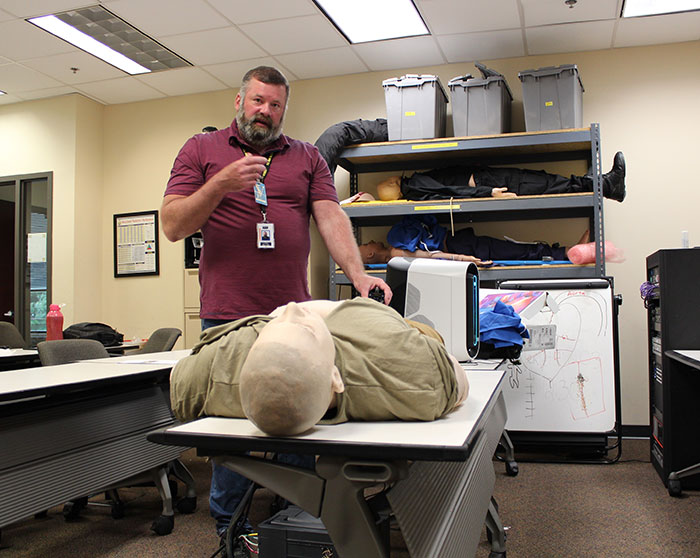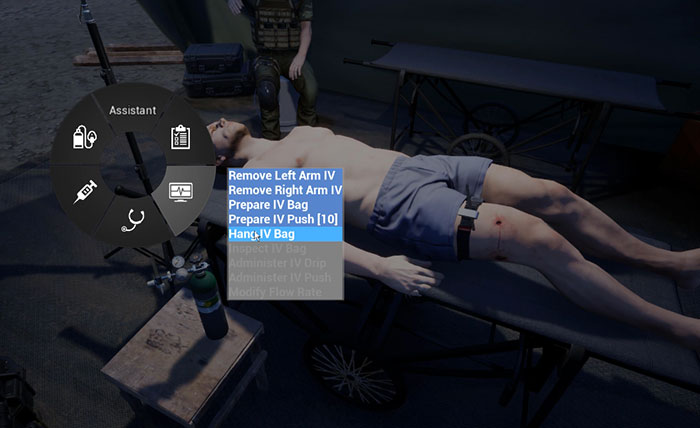USAMRDC, Secret Service Test Prolonged Field Care Technology

As the U.S. military continues efforts to identify and neutralize a number of evolving threats to the Warfighter, the deployment of advanced technology likewise continues to play an outsized role in that process. For the U.S. Army Medical Research and Development Command's Medical Simulation and Information Sciences Research Program, that effort extends far beyond the boundaries of the Command and into the larger federal footprint. On June 11, as part of a cooperative effort with the U.S. Secret Service, MSISRP completed delivery of the SUSTAIN prolonged field care device as part of an attempt to glean real-world insight into a potential life-saving technology.
"We need to find ways to better train for prolonged field care situations," says MSISRP Senior Program Manager Frank Karluk. "So in many ways we're seeking to answer a basic question [with this technology] – when there's no evacuation, what do we do?"
From that perspective, the pairing with the Secret Service functions as a test drive of sorts, whereby new recruits can learn standard medical training and lifesaving skills via the SUSTAIN device – which is comprised of both a computer-activated manikin and an accompanying tablet-based software system – with Secret Service instructors then relaying those real-world results back to USAMRDC. MSIRSP decided to partner with the USSS following a site visit to their Maryland-based training facility by MSISRP portfolio manager Dr. Darrin Frye earlier this year.

"[We] wanted to try and figure out how we could help other agencies – not just DOD agencies – do their training because their instructors are delivering almost identical training as the Soldiers, Sailors, Marines and Airmen are [receiving]," says Karluk.
"As our staff grows, we're trying to make an effort to basically bump-up the training – make it a little bit more hands-on, a little bit more tactile," says Barry Frasier, a USSS Emergency Services Specialist who will be charged with putting the device through its paces. "[We want] our people to perform the medical skills instead of sitting in a classroom."
From MSISRP's perspective, the interagency deployment of the SUSTAIN aids in the teaching of core skills related to successful prolonged field care, and also furthers the military's goal of using medical simulation technology to help refine those same skills – both of which are key tenets of the military's medical infrastructure moving forward. The manikin itself is referred to as the Modular Healthcare Simulation Education System; which is, to be technically accurate, less a manikin and more an interchangeable system allowing compatible plug-and-play peripherals (or, life-like limbs) to communicate with a central computerized brain. The MoHSES is a self-standing effort previously funded by MSISRP (and in turn created at the University of Minnesota) that is then paired with the software system, which was developed by New Mexico-based Applied Research Associates to form the complete SUSTAIN system. While the software – which is essentially a video game – teaches users how to care for casualties over the course of several days in a virtual environment, the MoHSES teaches users how to apply those skills in the real, physical world. The life-like manikin then relays to a computer whether or not the user diagnosed (and then treated) the casualty correctly – documenting everything from correct tourniquet application to proper treatment of a collapsed lung.
"We can let you learn the protocol, let you learn the steps you should take and then put you in front of a manikin and say, now do it for real," says Karluk.
For that reason, Frasier – a former Air Force medic – plans to use the system for his upcoming paramedic courses and a slew of Law Enforcement Responder courses; the latter of which is similar in tone and structure to the Army Combat Lifesaver Course. Just as the military envisions prolonged field care as long-term medical care to be deployed if evacuation from a given combat zone is not possible for several days, the USSS similarly plans to deploy such skills during shelter-in-place situations when (and if) agents encounter similar aggression during their duties. Indeed, those similarities were the driving force behind the effort in the first place.
"A lot of the training in the past has been done [via classroom learning] historically because the simulation tools just weren't there," says Frasier, noting the SUSTAIN offers a variety of training options. "But in the past couple years what we've been doing is moving more and more into that direction."














